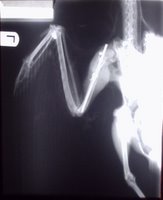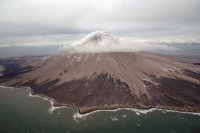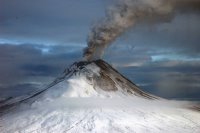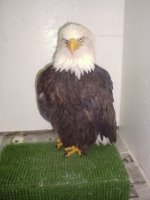Most of the wild birds brought to our clinic suffer from injuries or problems caused by humans. Since most people try to avoid causing harm to other living things I decided to put together a list of things to do or not to do to help wildlife. The list is in no particular order of importance, but if everyone followed these suggestions, our caseload would be dramatically reduced.
1. Prevent your pet cats and dogs from attacking and/or "playing with" wild birds. Don't allow them to run without supervision and raise your cats as indoor pets. Many injured birds are brought to the clinic each year with terrible wounds from dog and cat attacks.
2. Alert birds to large expanses of glass in your home, such as patio doors or picture windows, by hanging streamers, putting bird silhouettes on the glass surface, or allow the glass to be a little bit dirty. Reducing the reflection should cut down on the number of birds who collide, often fatally, with windows and doors. Static-cling decals that you can affixed to windows are available through
WindowAlert.
3. Educate children to respect and care for all wild creatures and their habitats. Children need to learn that wild animals are not playthings and should be allowed to go about their lives unmolested. Children should also be told not to destroy nests, burrows and other wildlife homes.
4. Pick up litter and refuse that could harm wildlife, including six-pack connectors (after cutting each circle to reduce the risk of entanglement), monofilament fishing line, lead weights, swivels and watch batteries (if consumed by waterfowl they can cause mercury poisoning).
5. Be alert when driving, especially near wildlife refuges and in rural areas, to avoid hitting or running over wild creatures. Animals do not recognize the danger from an oncoming vehicle. And please stop and move any turtles away from the roadway or shoulder of the road.
6. As a general rule, leave infant wildlife alone, since they are not always truly orphaned. A parent may be nearby or will return soon. Be sure they are in need of help before you remove them from the nest area. If you find young birds on the ground, attempt to return them to the nest.
7. Place caps over all chimneys and vents on your roof to prevent birds, ducks and raccoons from taking up residence and becoming a nuisance or getting trapped.

8. Do not leave fishing line or fish hooks unattended or lying about outdoors. Try to retrieve any kite string left on the ground or entangled in trees.
We lost one sea gull and a loon due to fishing lures and or weights. Check out Wildlife Without Lead.
9. Before mowing your lawn or rototilling your garden, walk through the area first to make sure no rabbits or ground-nesting birds are in harms way. Remember, it only takes a couple weeks for these babies to grow and leave the nest. Be tolerant and give them the time they need.
10. Check trees to make sure there are no active nests or residents of cavities before cutting them down. Even better, avoid cutting down dead trees if they pose no safety hazard, since they provide homes for a wide variety of wildlife.
11. Use non-toxic products on your lawn and garden.
12. Motor oil should not be left in oil pans unattended. Birds often fall into these pans and few survive.
13. Do not attempt to raise or keep wildlife yourself. Not only is it illegal, but wild creatures do not make good pets and captivity poses a constant stress to them. Young wild animals raised without contact with their own species fail to develop survival skills and fear of humans, virtually eliminating their chances of survival in the wild.

14. Explore non-lead alternatives for ammunition and fishing tackle. Voluntary change to non-toxic substitutes will help keep the environment free of poisons and give outdoor enthusiasts the gratifying opportunity to preserve the nature that they dearly treasure.
We recieved seveal eagles in the clinic this year with lead poisoning from eating other birds or animals that were shot with lead pellet. 15. Trappers, check your traps regularly. Promote trapping methods that will reduce the possibility of catching nontarget animals. Follow the
Trappers Code of Ethics.
More information can be found at
Wildlife Haven - Center for Rehabilitation & Education
IMPORTANT NOTE: Under federal and state laws, it is illegal for an unlicensed individual to possess a native wild animal.
 2006-01-30 17:20:24
2006-01-30 17:20:24




















